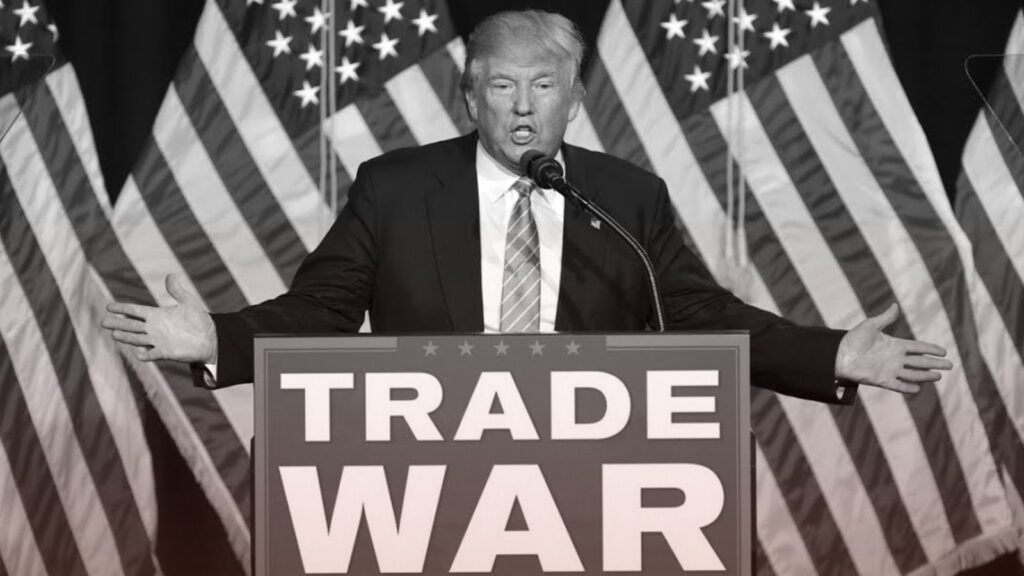A federal court ruling in Manhattan has cast fresh legal doubt on President Donald Trump’s sweeping use of emergency powers to impose tariffs, striking a significant — though not necessarily decisive — blow to one of the signature economic tactics of his presidency. The decision, handed down Wednesday, questions the legality of some of Trump’s most aggressive trade measures and raises fresh questions about the boundaries of executive authority in economic policy.
At the center of the ruling is the 1977 International Emergency Economic Powers Act (IEEPA), the legal instrument Trump has repeatedly used — both in his first and current term — to justify tariffs on a vast array of imported goods, often without congressional approval. The court found that the statute had been stretched beyond its intended scope, with U.S. District Judge Loretta Kane concluding that “the IEEPA was never meant to serve as a substitute for regular legislative trade action.”
Specifically, the ruling invalidates tariffs that were imposed absent a clear, verifiable national emergency. “The executive branch’s reading of the IEEPA turns a limited emergency statute into a permanent license to conduct trade policy by fiat,” Kane wrote. “That is inconsistent with both the letter and spirit of the law.”
The Trump administration swiftly denounced the decision. White House Press Secretary Karla Munro called it “a blatant overreach by the judiciary, meddling in the president’s constitutional duty to protect the American economy.” Trump, speaking later at a campaign-style rally in Michigan, doubled down. “They want us to be weak again. They want the same globalist deals that shipped your jobs to China,” he told supporters. “But I’ll never stop fighting for American workers — and we will appeal this nonsense all the way to the Supreme Court.”
For a president who has made “economic combat” a political brand, the ruling represents more than a legal obstacle — it’s a direct challenge to the aura of unilateral control that has defined Trump’s approach to trade. But whether this ruling will meaningfully restrict that power going forward is far from certain. Legal scholars warn that its impact will depend heavily on whether it survives appeal — and whether Congress decides to reassert its long-dormant role in setting trade policy.
“It’s a noteworthy check, but not a game-changer — at least not yet,” said Fiona Rosenthal, a legal analyst with the Brookings Institution. “This is one district court ruling. It will be appealed, and likely fast-tracked. Until higher courts weigh in, this is just the opening shot.”
The ruling has nonetheless sent ripples through global markets. European industrial firms saw a small bump in share prices, and Wall Street responded positively, with the S&P 500 and Dow both closing higher. Business groups in the U.S. welcomed the ruling as a long-overdue pushback against trade policy by executive decree.
“For years now, we’ve had a tariff regime driven by presidential whim, not predictable policy,” said Gregory Hill, senior advisor to the American Chamber of Commerce. “This ruling, even if just symbolic for now, suggests that era may have legal limits.”
Symbolism aside, the ruling’s practical effects may be limited in the short term. Many of the tariffs it addresses have already been modified or duplicated under other statutes, such as Section 232 (national security) and Section 301 (unfair trade practices). The Biden administration, during its time in office, largely left many of these tariffs intact — a signal of just how embedded they have become in U.S. trade infrastructure.
But the court’s skepticism could foreshadow deeper scrutiny if Trump proceeds with plans for even broader tariff action in his second term. He has proposed a flat 10% tariff on all imports, and a 60% duty on goods from China — proposals that would likely provoke immediate legal challenges if enacted.
The political reaction has, predictably, split along party lines. Republicans close to Trump have denounced the ruling. “This is judicial sabotage, plain and simple,” said Senator Josh Hawley. “We need to give the president the tools to fight back against unfair trade, not tie his hands.” On the other side, Democrats praised the decision as a potential pivot point. “It’s time to rein in economic autocracy,” said Senator Elizabeth Warren. “Trade policy should be debated in Congress, not declared by press release.”
But few in Washington are betting that the decision alone will shift the balance of power. “Congress has been abdicating its trade authority for decades,” said Anthony DeWitt, a senior fellow at the Center for Strategic and International Studies. “One court ruling won’t change that unless lawmakers are willing to follow it up with legislation.”
International observers, particularly in Europe and Asia, have taken the ruling as a possible sign of an internal American course correction. A spokesperson for the German Ministry of Economic Affairs noted that “predictability in American trade policy benefits everyone,” while Chinese state media called the ruling “an encouraging sign that U.S. institutions are capable of restraining unilateralism.”
Still, many caution against premature optimism. Trump’s legal team is expected to appeal immediately, and the White House has shown no interest in backing down. Analysts say the most likely scenario is a lengthy legal battle — one that could leave global markets, U.S. industry, and America’s trading partners in a fog of uncertainty for months or even years.
The real test may not be the courts, but politics. If Trump continues to campaign — and govern — on an aggressive America-first economic platform, the courts may only be one battlefield in a much larger, ongoing war over how the U.S. defines and wields its economic power.
In the meantime, the court has drawn a line in the sand. Whether that line holds, or is swept away by political tides and legal appeals, remains to be seen.


